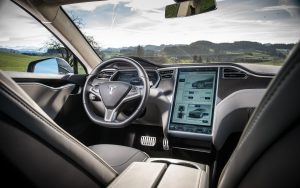After more than ten years on the market, Tesla can now claim top spot for best-selling plugin passenger car for 2018. While the leading American auto-makers have been eyeballing Elon Musk’s electric car with a mix of wonder and wariness, they understand that they are looking at a tech trend that is upending their fossil-fueled world.
Few features have made car manufacturers slow down and stop in quite the same way as Tesla’s over-the-air (OTA) update technology. While major automakers have been wirelessly updating software for peripheral functions like satellite radio for years, Musk’s multi-million-dollar pet project has been remotely repairing safety-critical systems since 2012.
The advantages of OTA updating are undeniable. For one, car owners can save time and hassle by avoiding unnecessary trips to the dealer. In addition, car makers and dealers can save major money by making basic warranty and repair fixes over the airwaves. But not everyone is convinced that these benefits outweigh the potential safety and security concerns.
“Remote updates can be great if they go well, but if they introduce safety defects or compromise security, they could be a nightmare,” says David Friedman, director of cars and product policy and analysis for Consumer Union, the advocacy division of Consumer Reports. “When software crashes on your phone or computers because of an update, it’s annoying. But it could be deadly when it happens in a 2-ton computer on wheels that can travel over 70mph.”
Even so, General Motors Co., Ford Motors Co., Toyota Motor Corp and other traditional automakers are answering the connected car’s rallying cry. GM recently announced they would be rolling out their first fully updatable auto in the coming months and looks to expand that internet-transmitted fixing functionality to other vehicles over the next several years. Ford stated they had similar plans to release a fully-electric SUV with wireless updating capability.
In 2013, Tesla raised the ground clearance on thousands of their vehicles so drivers could avoid hitting objects on roads while traveling at highway speeds. In 2017, they pushed out an update to extend battery life for people fleeing a hurricane in Florida.
The potential for positive public relations has not been lost on other car companies. “We’ll use it to fix things that go wrong, for sure,” said Jim Farley, Ford’s president of global markets. “But you can also surprise and delight the customer with an experience that they didn’t expect, that you don’t charge for, and that builds loyalty to your brand.’
No one wants to move too quickly though, it will take years for mainstream car manufacturers to catch up with its more connected electric counterpart. It represents a significant shift for the industry and automakers are slowly starting the transition. Engineers are in the process of rewiring their engine’s electrical systems in an attempt to centralize what is currently a jumble of software applications. It won’t be a quick process.
“Our industry kind of looked at [wireless updates] as more of a Silicon Valley thing,” said Glen De Vos, chief technology officer at automotive supplier Aptiv PLC, which specializes in electronics and safety systems. “I think people now see the value.”
























